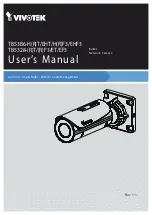
27-7
Cisco BPX 8600 Series Installation and Configuration
Release 9.3.30, Part Number 78-12907-01 Rev. E0, May 2005
Chapter 27 Alarms and Statistics
APS Alarms
Table 27-3
APS Alarms Representation
Alarm
Description
Remote Signal FAIL
Indicates that there is a problem with the far-end signaling information in the K1/K2 bytes.
There is a problem with the protection line’s physical layer. One has to disable APS and try
to bring up the protection line as a normal line and diagnose the physical layer (by putting
in loopback and so on).
Channel Mismatch
Happens in only bidirectional mode and indicates that there is a problem with the
underlying APS channel protocol. The receive K2 channel number does not equal the
transmit K1 channel number. There is a problem with the protection line’s physical layer.
One has to disable APS and try to bring up the protection line as a normal line and diagnose
the physical layer (by putting in loopback and so on).
Prot Sw Byt FAIL
Protection Switch Byte (PSB) failure. In bidirectional mode, indicates that there is an
invalid K1 byte. The receive K1 request does not match the reverse request and is less than
the transmit K1 request. In all modes, a PSB alarm indicates that K1/K2 protocol is not
stable. There is a problem with the protection line’s physical layer. One has to disable APS
and try to bring up the protection line as a normal line and diagnose the physical layer (by
putting in loopback and so on). This alarm is seen if the local end of an APS working line
or trunk is connected directly to the remote end’s protection line or trunk.
APS Card Missing
Specifies that this alarm is seen in APS 1+1 configurations when BXM firmware
determines that any BXM front or back card is missing. Check
dspcds
or look in the
dsplog
to see which card associated with the APS line is missing.
FarEnd Prot FAIL
Indicates that the far end protection line is failing. When there is Signal Failure on the
protection channel, the remote end sees Far End Protection Fail. There is a problem with
the protection line’s physical layer. One has to disable APS and try to bring up the
protection line as a normal line and diagnose the physical layer (by putting in loopback, and
so on). If the other end shows the “Architect Mismatch” APS alarm, then the APS standards
could be different at each end. To verify, use the
cnfcdaps
command or
cnfapsln
command.
Architect Mismatch
Indicates that one end of the APS line is configured for APS 1+1 and the other end is
configured for APS 1:1, which will not work. If the line is configured for GR-253 standard
operation an architecture mismatch can also mean that one end is bidirectional and the other
end is unidirectional (ITUT will not report this). Verify that the APS architecture is
configured the same on either end of the APS lines using the
cnfapsln
command. This
alarm will also be seen if the local end of an APS working line or trunk is connected directly
to the remote end’s protection line or trunk. In this case, one end of the line usually will
have a “Prot Sw Byt FAIL” alarm present. If the other end shows the “FarEnd Prot FAIL”
APS alarm then the APS standards could be different at each end. To verify, use the
cnfcdaps
command or
cnfapsln
command.
Standard Mismatch
Indicates that on the local end of an APS 1+1 configuration, one card is running the ITUT
standard and the redundant card is running the GR-253 standard. Use the
cnfcdaps
command to check and change the standard.
Содержание BPX 8650
Страница 49: ...P A R T 1 The BPX Switch ...
Страница 50: ......
Страница 159: ...P A R T 2 Installation ...
Страница 160: ......
Страница 273: ...P A R T 3 Initial Configuration and Network Management ...
Страница 274: ......
Страница 311: ...P A R T 4 Configuring Connections ...
Страница 312: ......
Страница 487: ...P A R T 5 Troubleshooting and Maintenance ...
Страница 488: ......
Страница 533: ...P A R T 6 BPX Specifications ...
Страница 534: ......
Страница 555: ...P A R T 7 Appendices ...
Страница 556: ......
















































